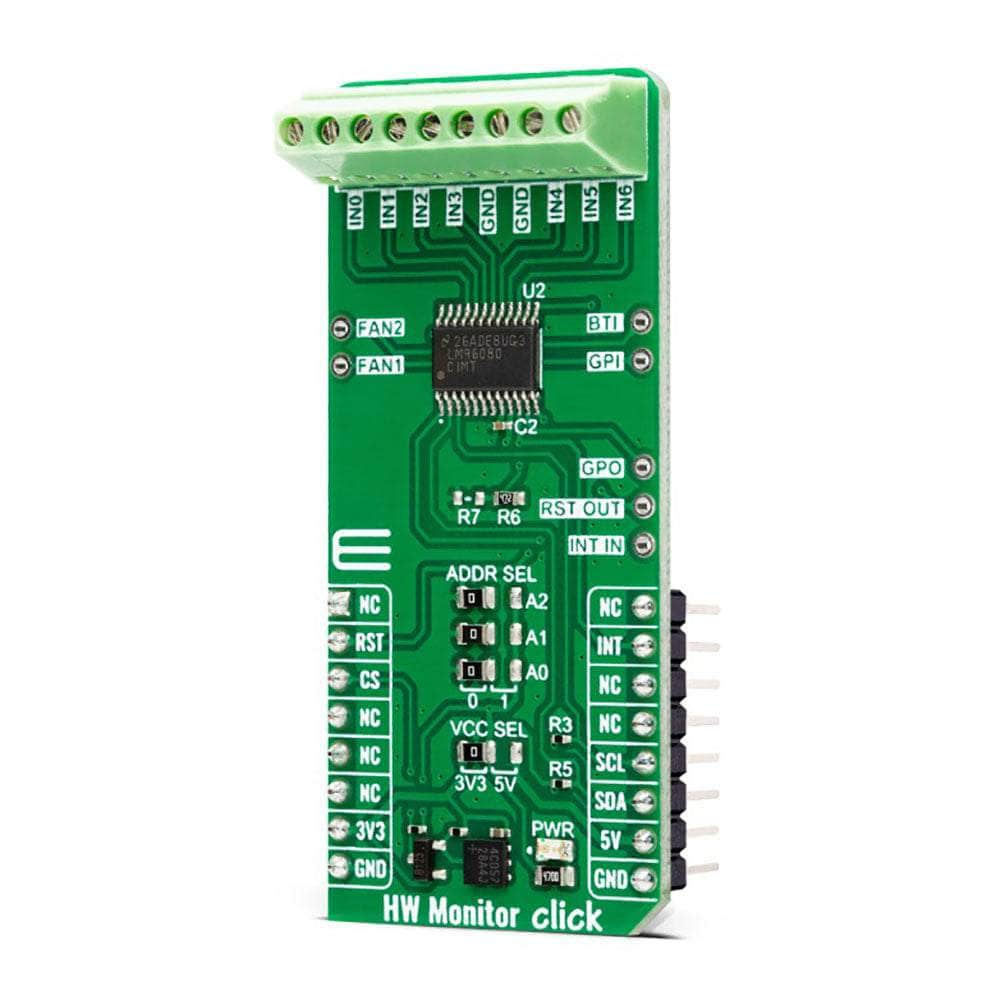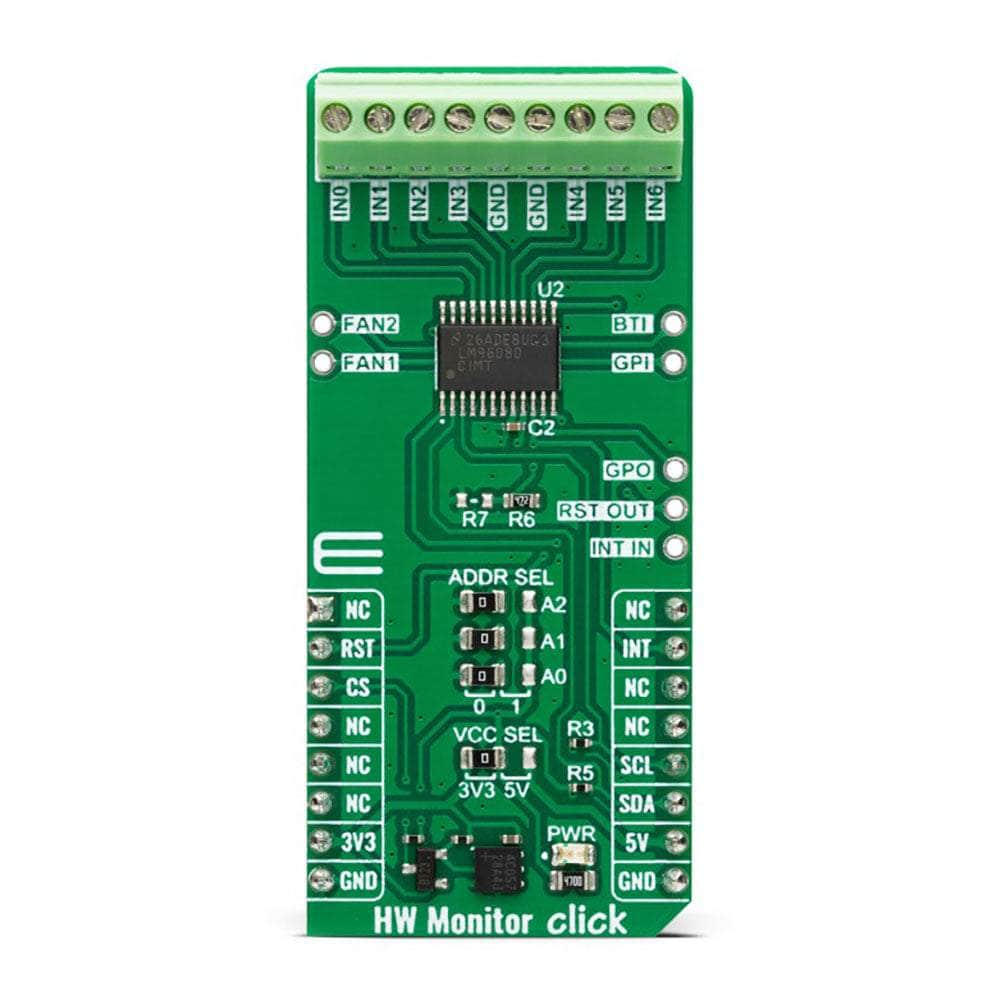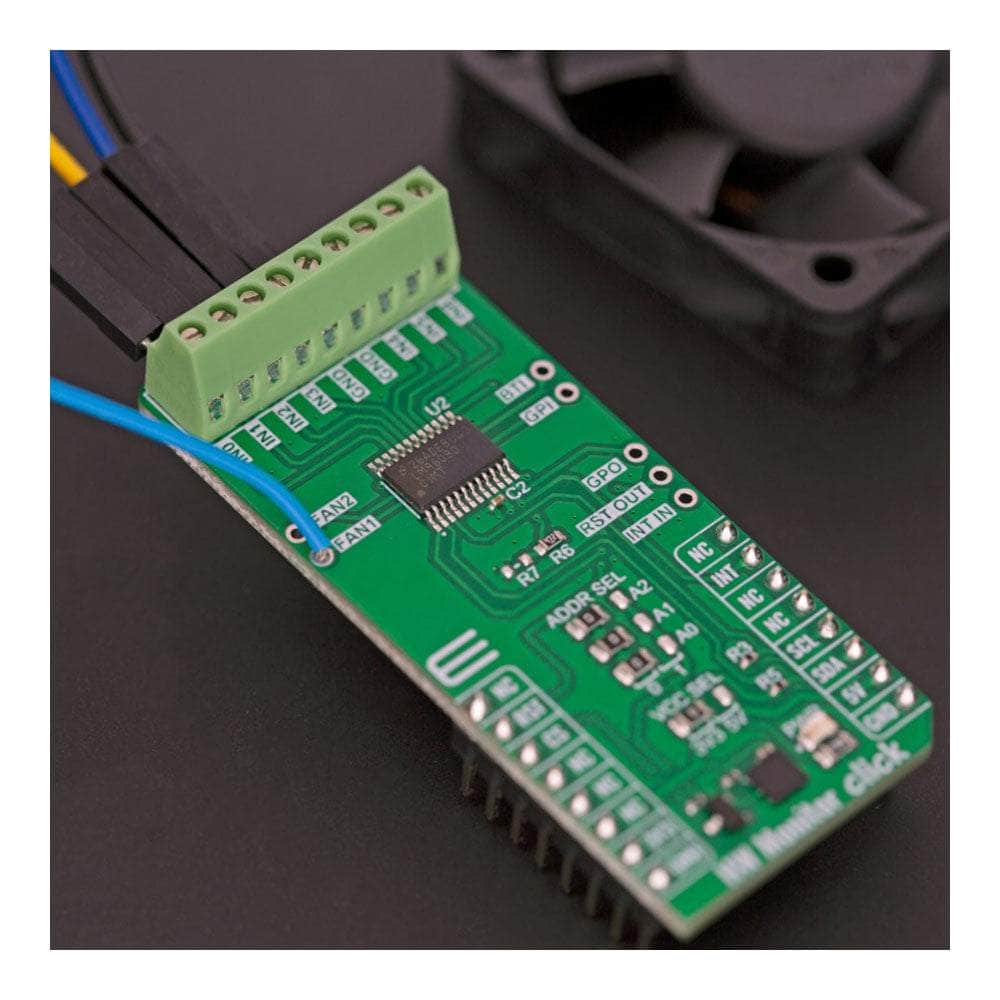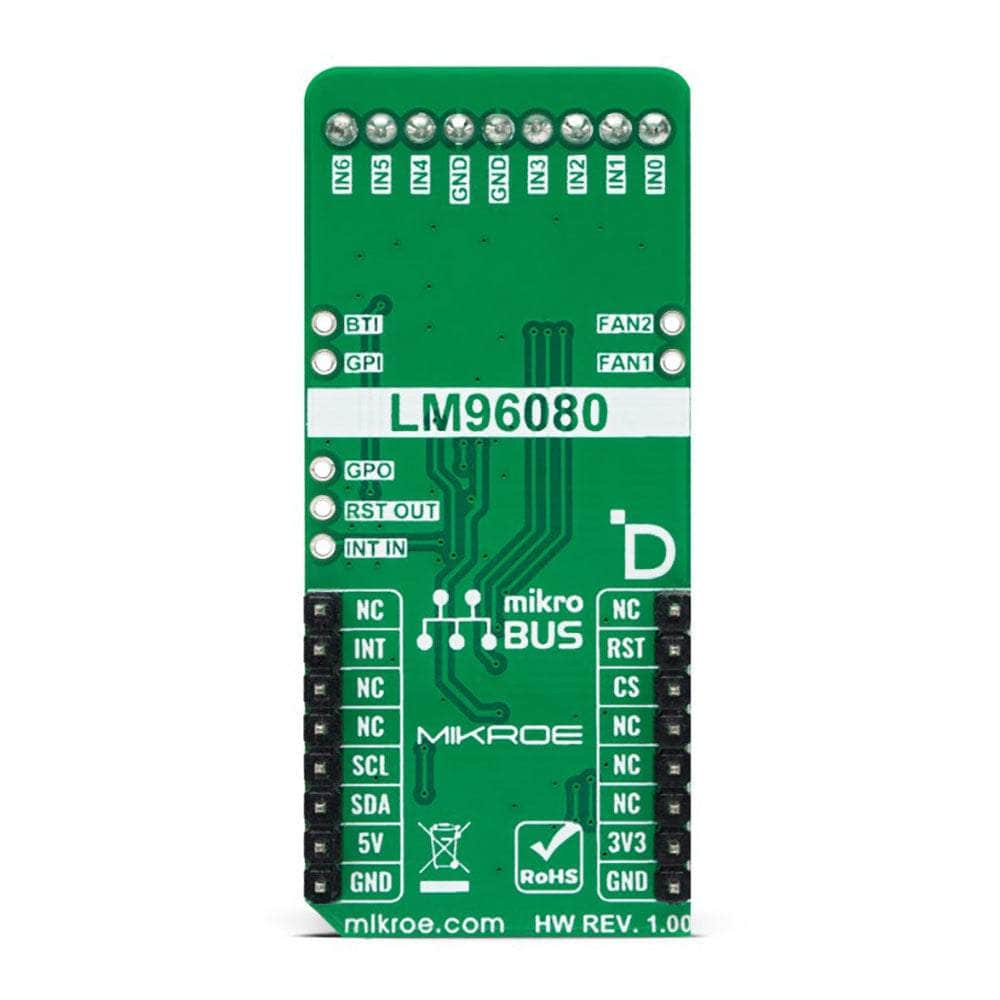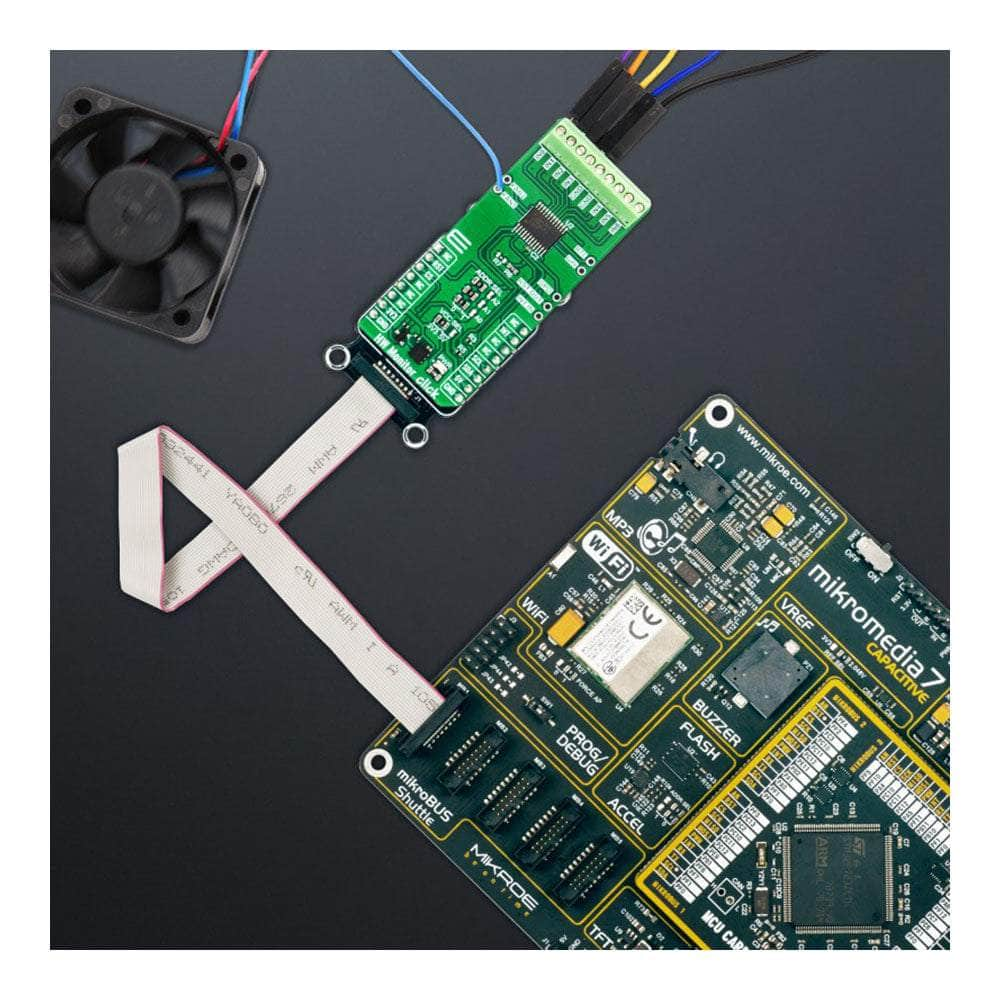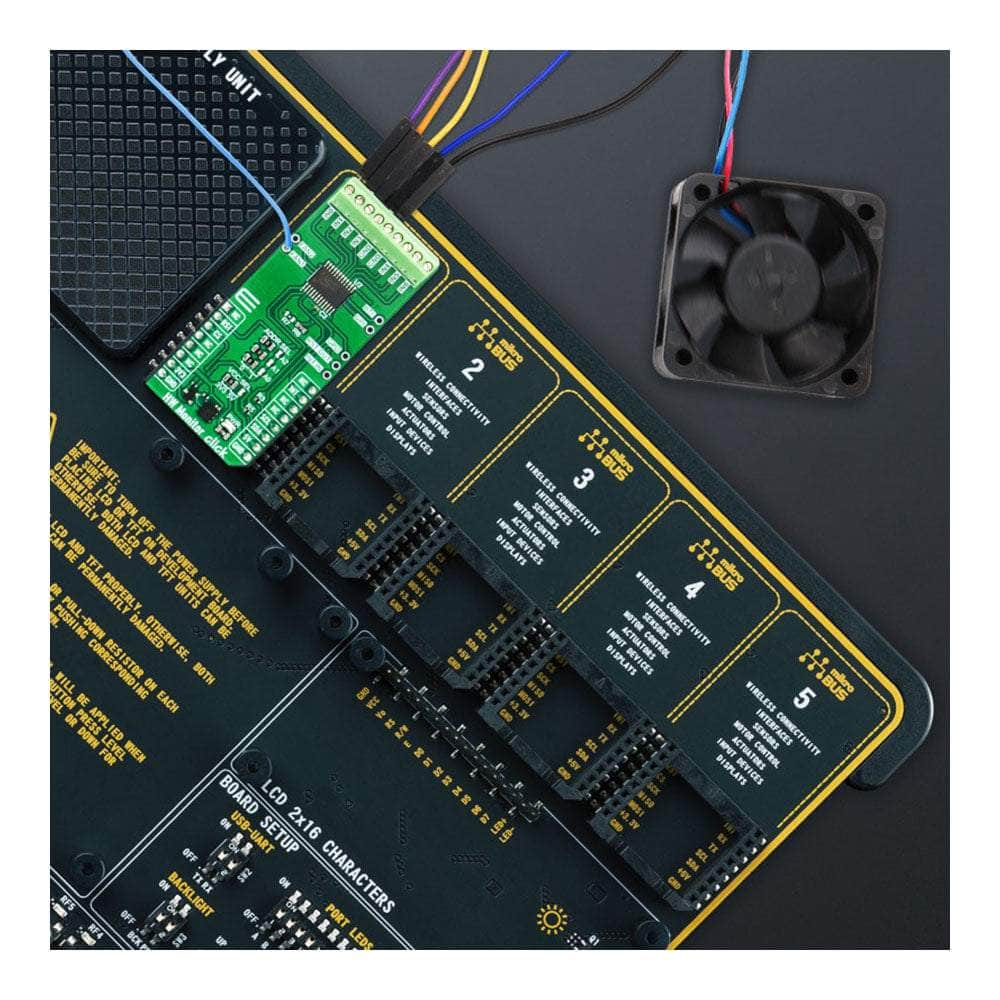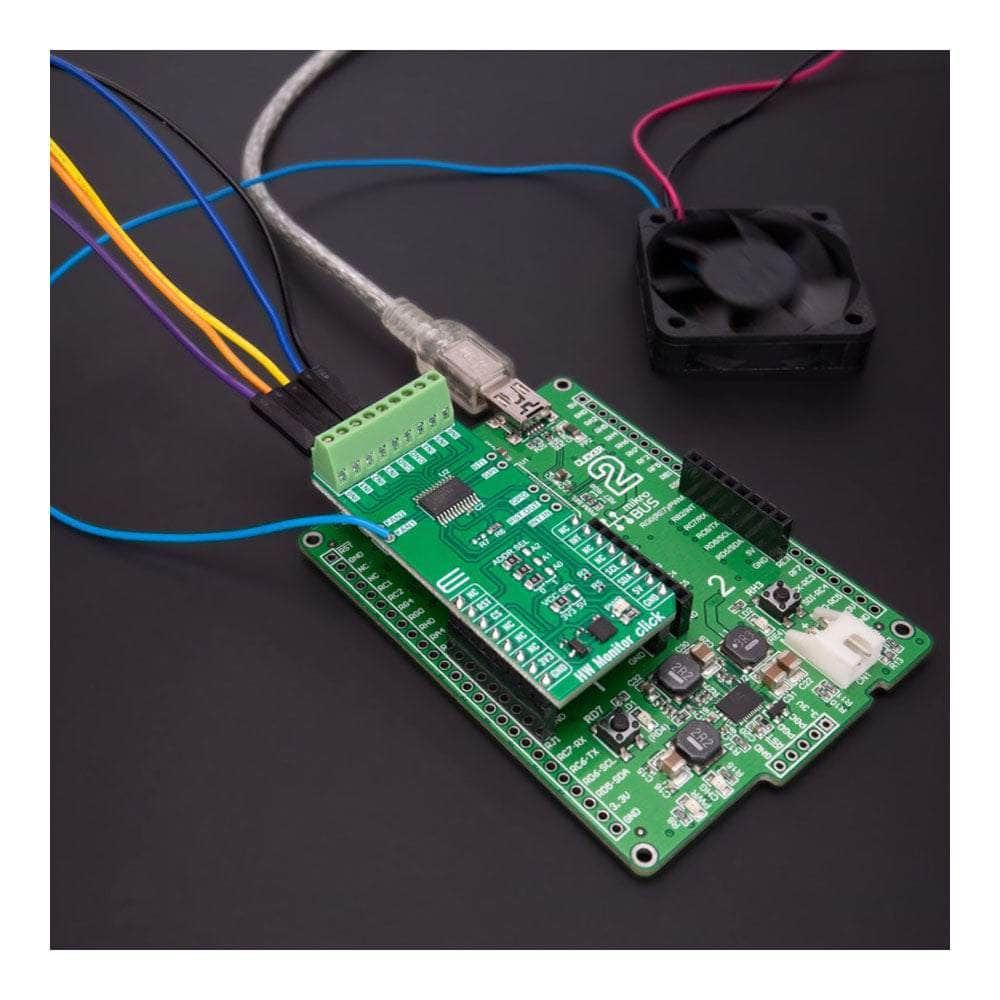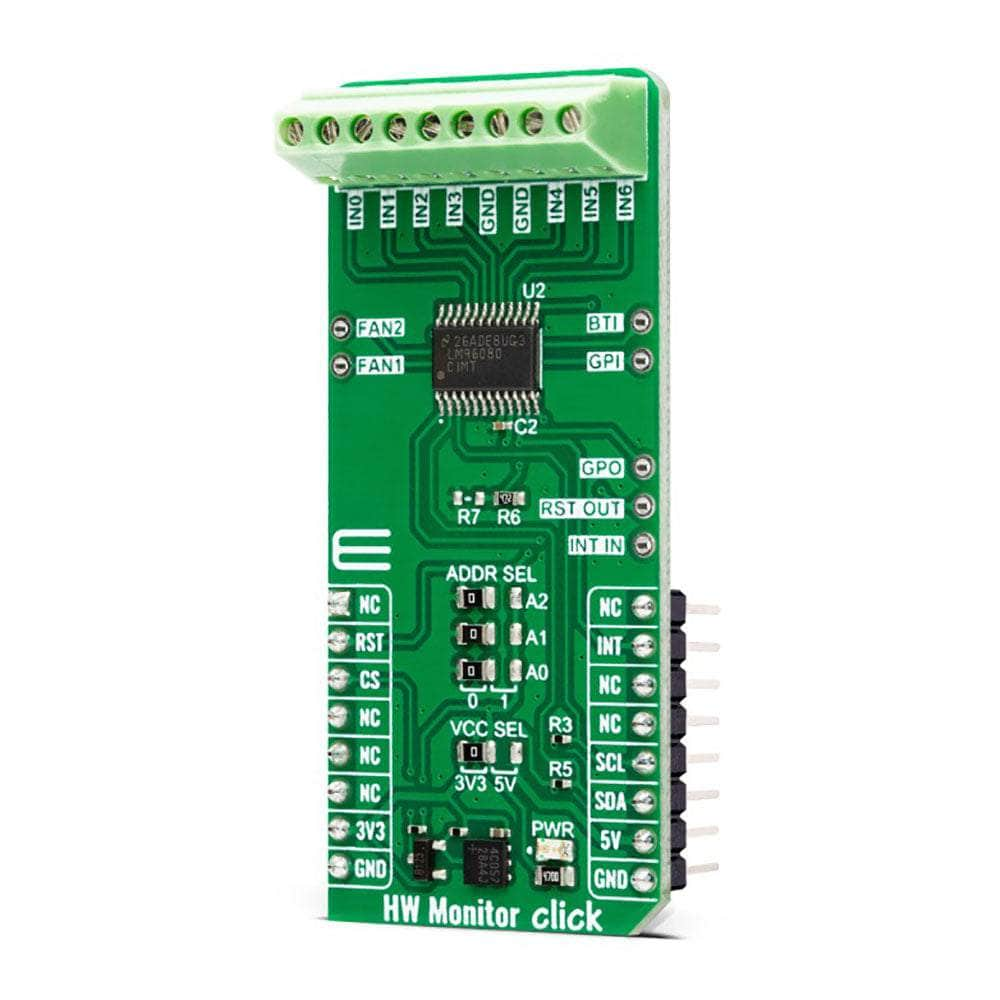
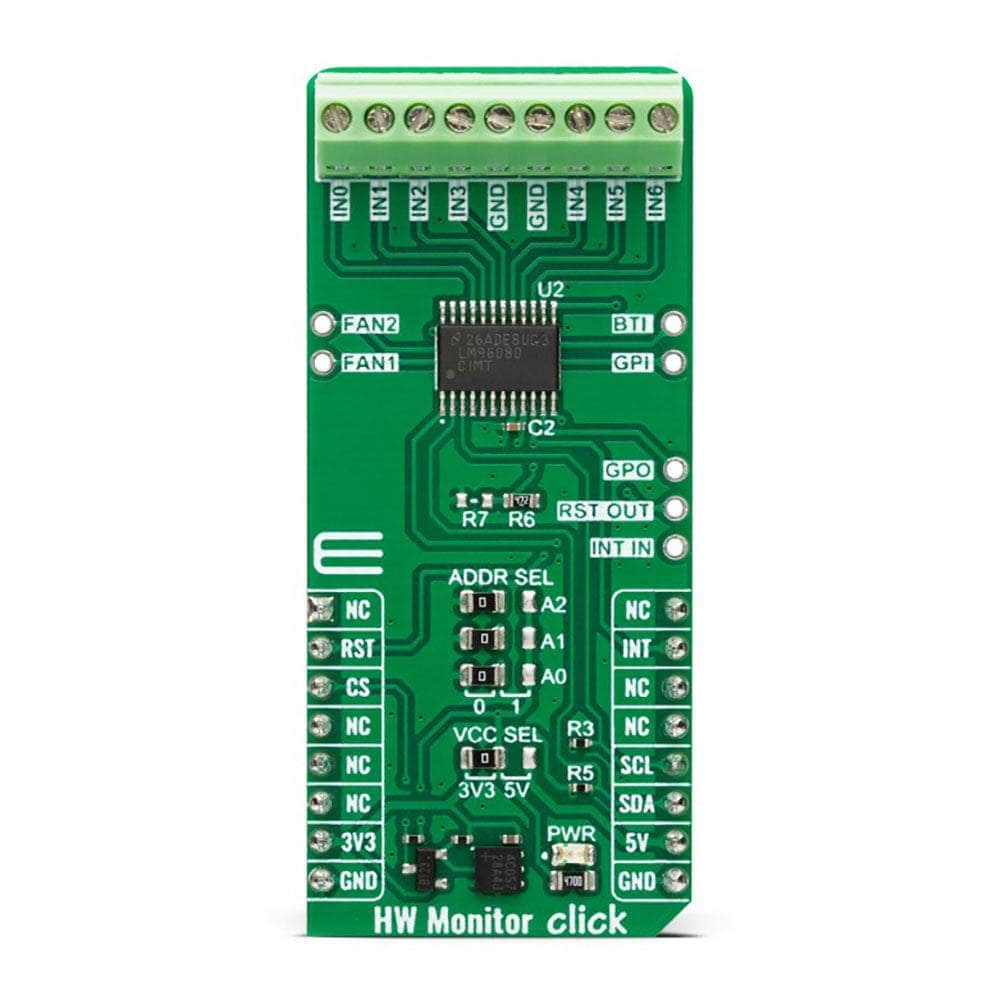
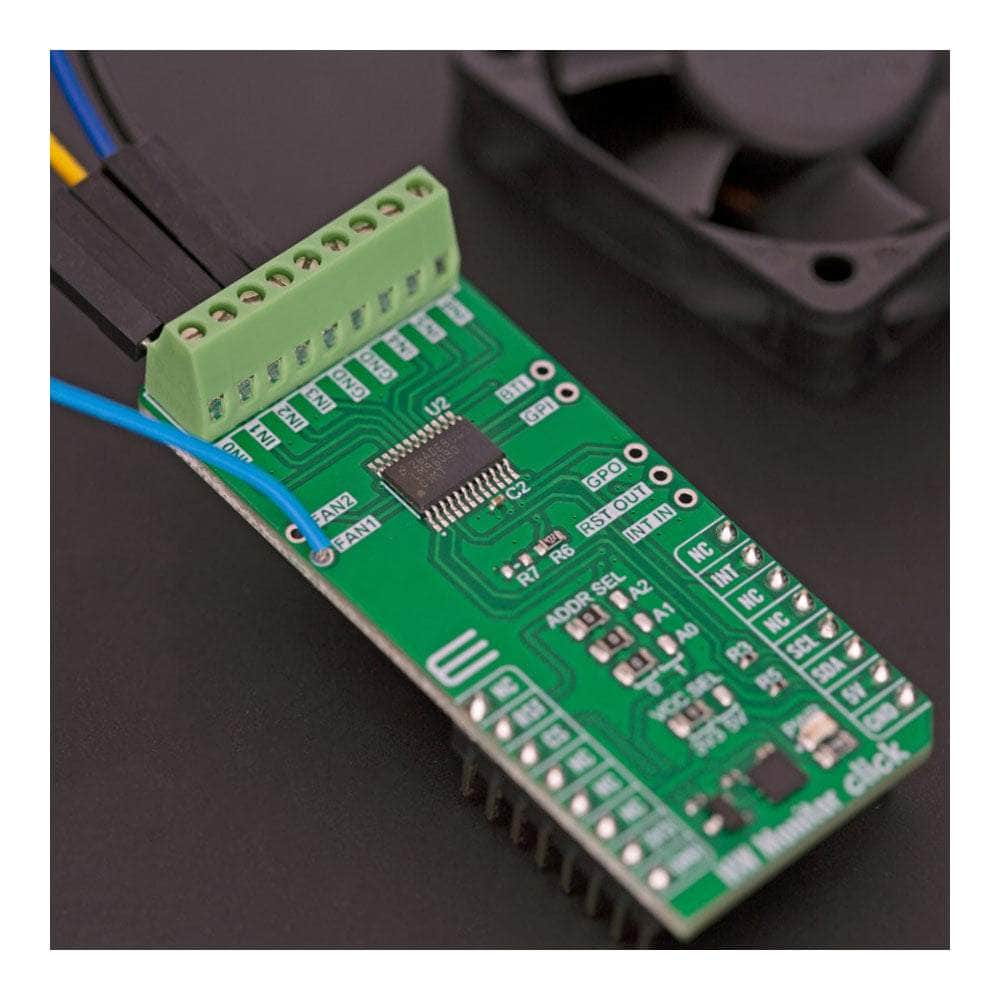
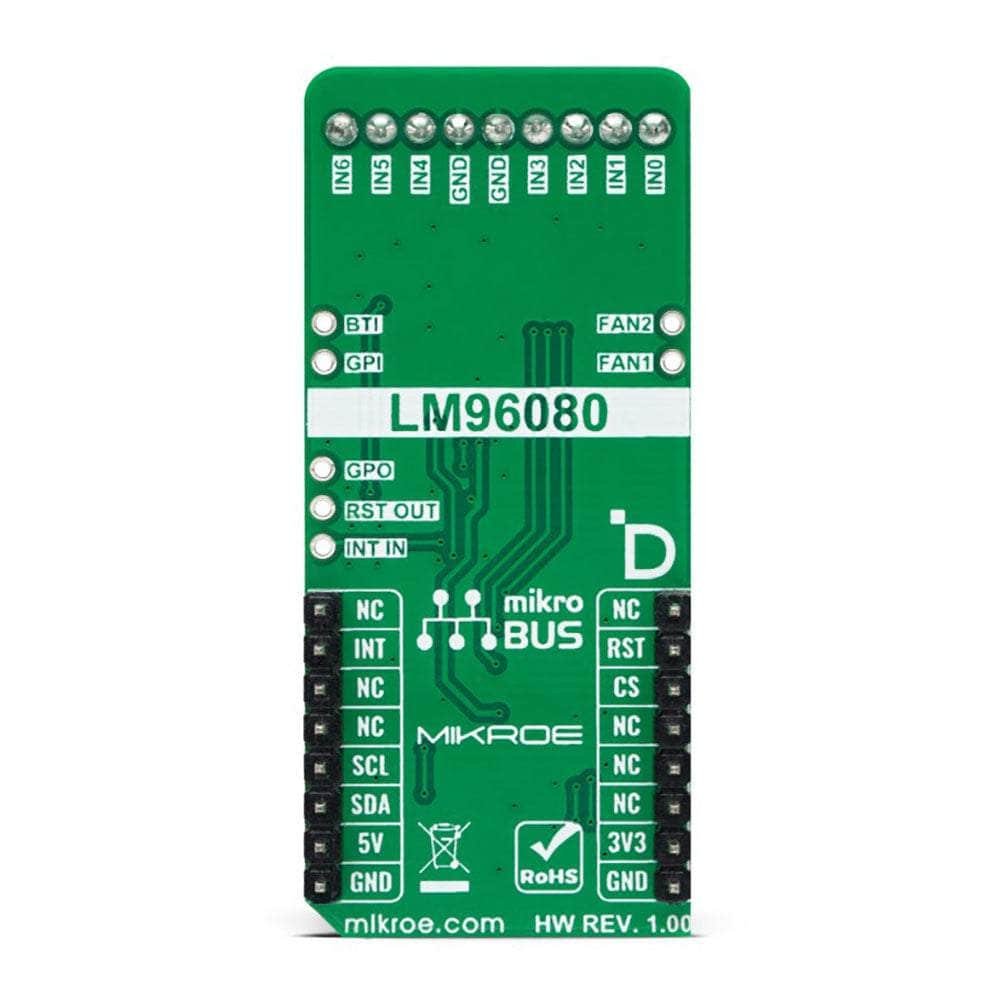
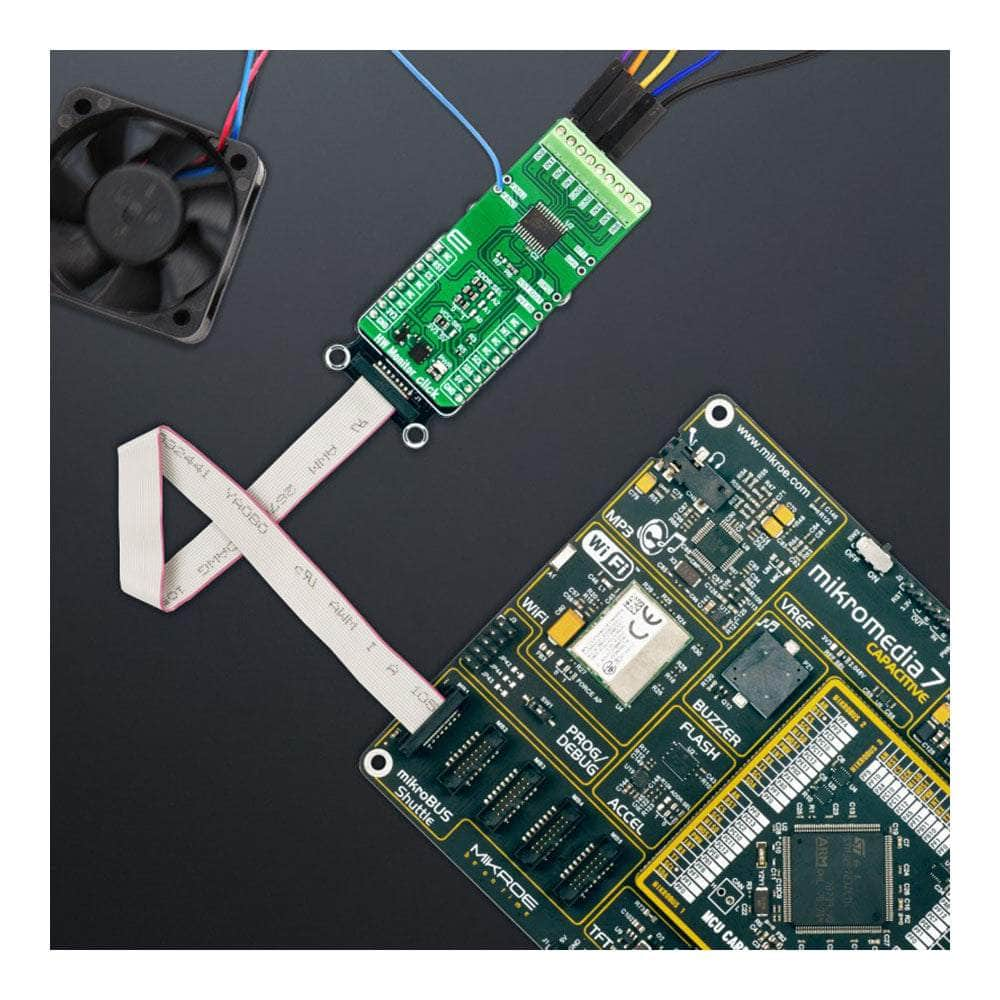
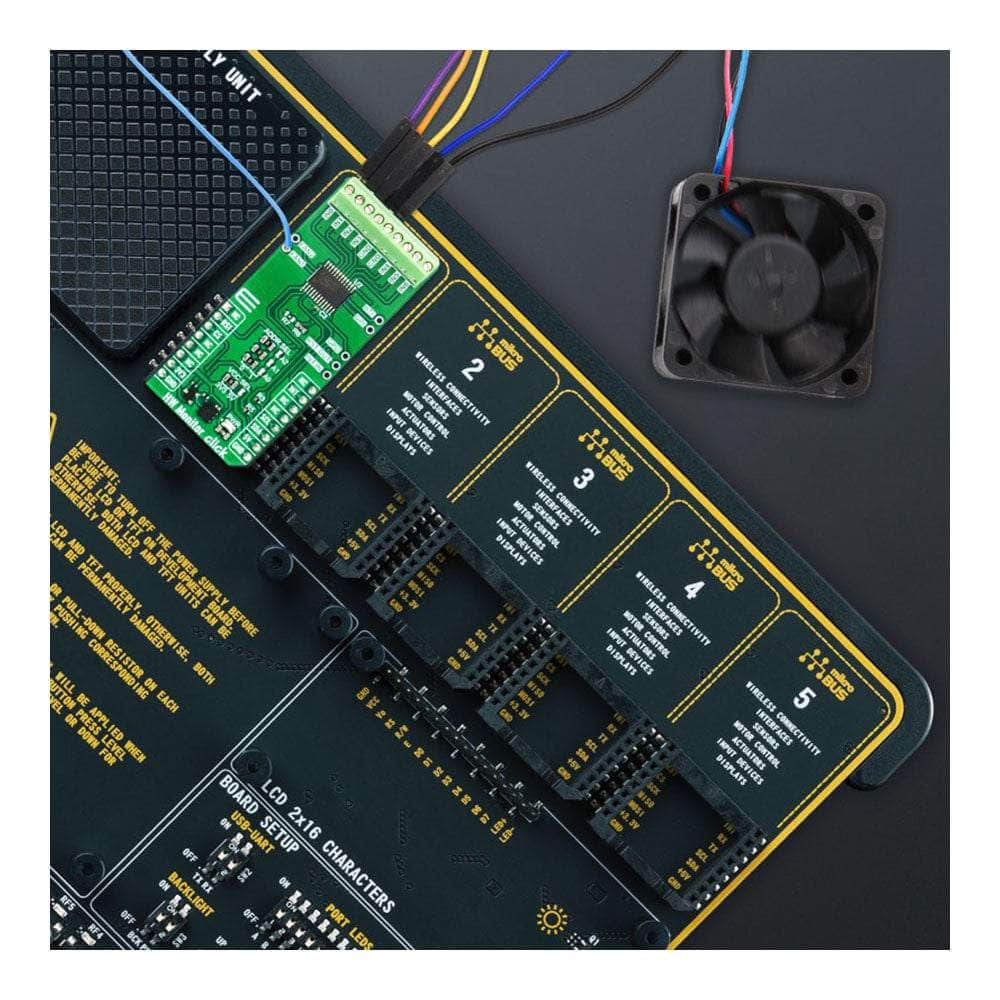
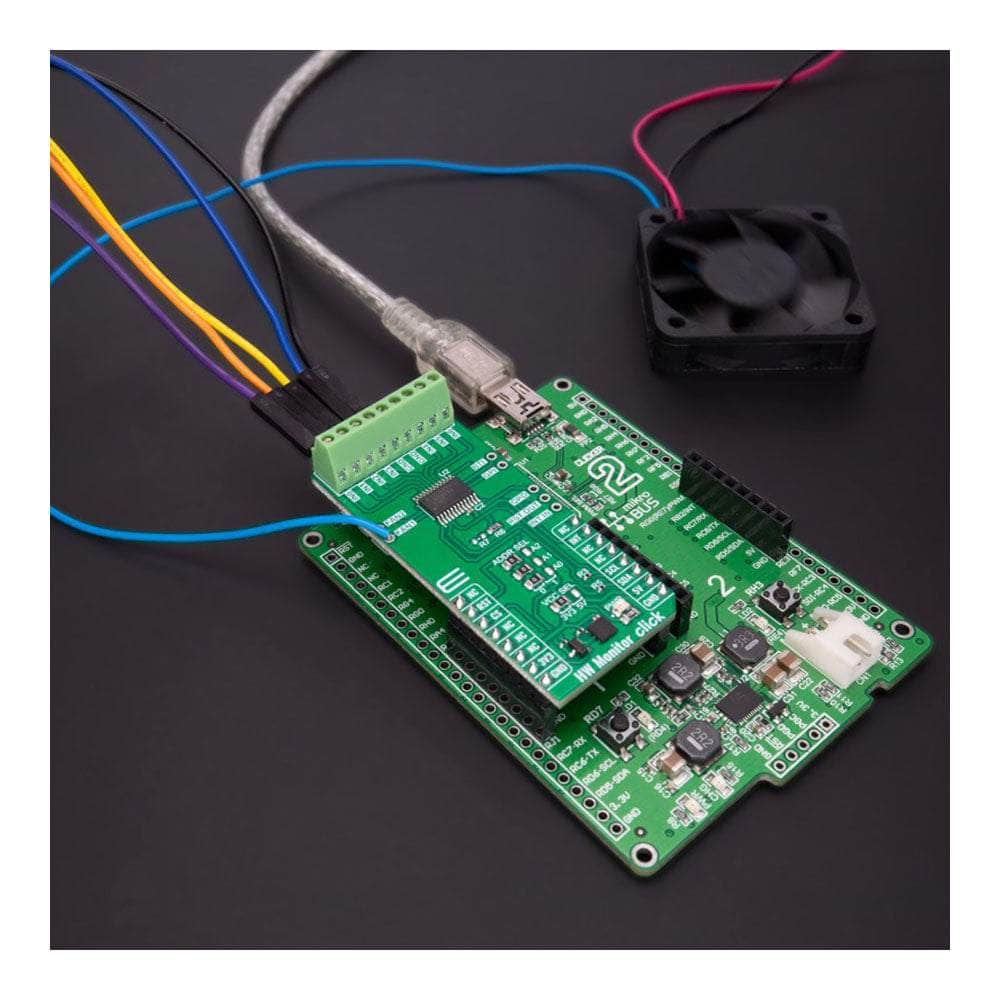
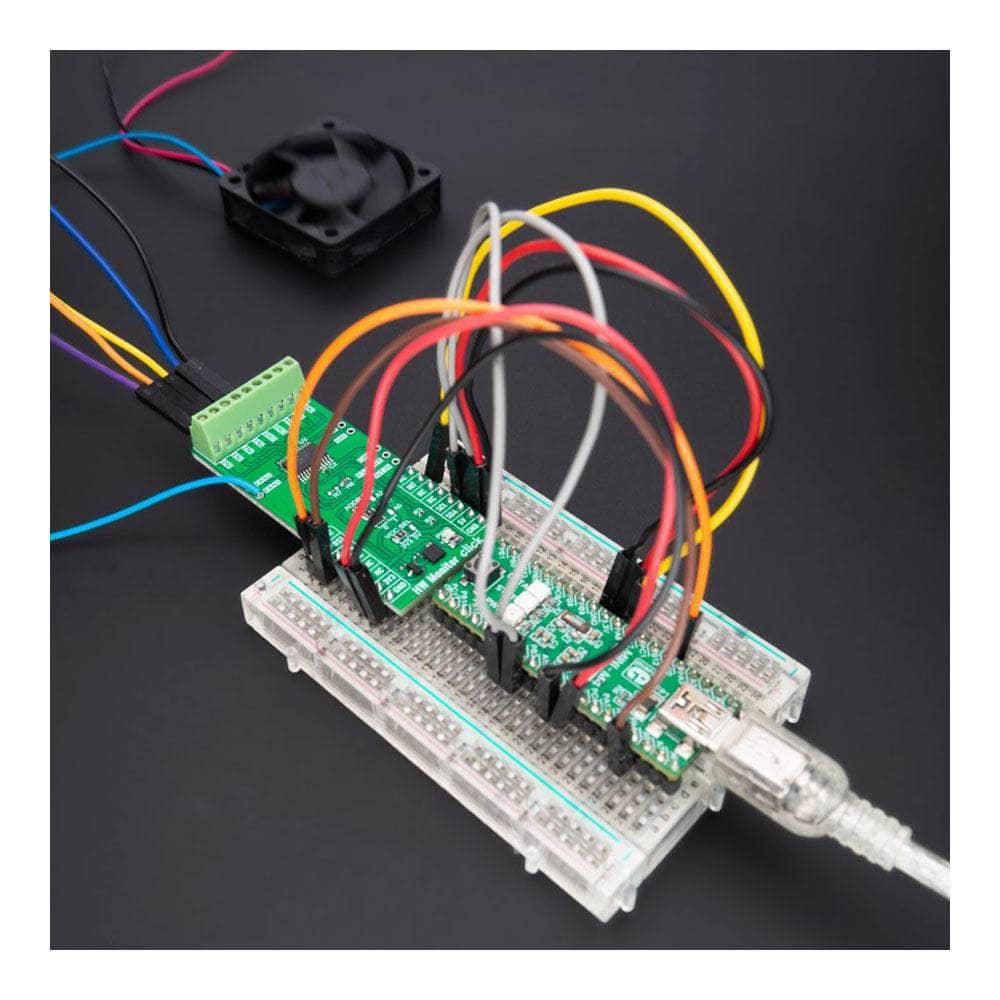
Key Features
Overview
Introducing the HW Monitor Click Board™: Your Ultimate Hardware Performance Regulator
Discover the power of the HW Monitor Click Board™, a compact add-on board designed to monitor and regulate the performance of various hardware components within an embedded system. This exceptional board is equipped with the LM96080, an I2C-configurable system hardware monitor from Texas Instruments. This advanced monitor contains a 10-bit delta-sigma ADC capable of measuring seven positive voltages and local temperature.
Experience Advanced Monitoring Features
The LM96080 also boasts two programmable fan speed monitoring inputs, along with other hardware monitoring functions such as chassis intrusion detection, additional external interrupt input, master reset for external purposes, and a sequencer performing watchdog window comparisons for all measured values. This versatile Click board™ is perfect for system thermal and hardware monitoring in a wide range of applications, including servers, electronic test equipment, instrumentation, communications infrastructure, and consumer electronics.
Supported by a mikroSDK-Compliant Library
Enhance your software development experience with the HW Monitor Click Board™, which is supported by a mikroSDK-compliant library. This library includes functions that simplify the development process, allowing you to focus on what's important: your project.
Ready for Use with mikroBUS™
The HW Monitor Click Board™ arrives as a fully tested product, ready for use on a system equipped with the mikroBUS™ socket. Don't wait any longer – experience the benefits of this advanced hardware monitoring solution today!
Downloads
Présentation du HW Monitor Click Board™ : votre régulateur de performances matérielles ultime
Découvrez la puissance de la carte HW Monitor Click Board™, une carte complémentaire compacte conçue pour surveiller et réguler les performances de divers composants matériels au sein d'un système embarqué. Cette carte exceptionnelle est équipée du LM96080, un moniteur matériel système configurable en I2C de Texas Instruments. Ce moniteur avancé contient un ADC delta-sigma 10 bits capable de mesurer sept tensions positives et la température locale.
Découvrez les fonctionnalités de surveillance avancées
Le LM96080 dispose également de deux entrées de surveillance de la vitesse du ventilateur programmables, ainsi que d'autres fonctions de surveillance du matériel telles que la détection d'intrusion dans le châssis, une entrée d'interruption externe supplémentaire, une réinitialisation générale à des fins externes et un séquenceur effectuant des comparaisons de fenêtres de surveillance pour toutes les valeurs mesurées. Cette carte Click™ polyvalente est parfaite pour la surveillance thermique et matérielle du système dans une large gamme d'applications, notamment les serveurs, les équipements de test électroniques, l'instrumentation, l'infrastructure de communication et l'électronique grand public.
Pris en charge par une bibliothèque compatible mikroSDK
Améliorez votre expérience de développement logiciel avec HW Monitor Click Board™, qui est pris en charge par une bibliothèque compatible mikroSDK. Cette bibliothèque comprend des fonctions qui simplifient le processus de développement, vous permettant de vous concentrer sur ce qui est important : votre projet.
Prêt à l'emploi avec mikroBUS™
Le HW Monitor Click Board™ est un produit entièrement testé, prêt à être utilisé sur un système équipé de la prise mikroBUS™. N'attendez plus et découvrez dès aujourd'hui les avantages de cette solution de surveillance matérielle avancée !
| General Information | |
|---|---|
Part Number (SKU) |
MIKROE-5684
|
Manufacturer |
|
| Physical and Mechanical | |
Weight |
0.02 kg
|
| Other | |
Country of Origin |
|
HS Code Customs Tariff code
|
|
EAN |
8606027384929
|
Warranty |
|
Frequently Asked Questions
Have a Question?
-
Is the HW Monitor Click Board™ ready to use?
Yes, the HW Monitor Click Board™ comes as a fully tested product, ready for use on a system equipped with the mikroBUS™ socket.
-
What software development support does the HW Monitor Click Board™ have?
The HW Monitor Click Board™ is supported by a mikroSDK-compliant library, which includes functions that simplify software development.
-
What is the HW Monitor Click Board™ suitable for?
This Click board™ is suitable for system thermal and hardware monitoring for various servers, electronic test equipment and instrumentation, communications infrastructure, consumer electronics, and more.
-
What can the LM96080 measure?
The LM96080 can measure seven positive voltages, local temperature, two programmable fan speed monitoring inputs, chassis intrusion detection, additional external interrupt input, master reset for external purposes, and a sequencer performing watchdog window comparisons, all measured values.
-
What is the HW Monitor Click Board™?
The HW Monitor Click Board™ is a compact add-on board used to monitor and regulate the performance of various hardware components within an embedded system. It features the LM96080, an I2C-configurable system hardware monitor from Texas Instruments that contains a 10-bit delta-sigma ADC capable of measuring seven positive voltages and local temperature.

